October is National Domestic Violence Awareness Month, so we explore the films responsible for bringing the term “gaslighting” into popular discourse.
Individuals who have never suffered at the hands of an abuser often wonder how it’s possible for someone to find themselves in a situation where they are perpetually physically or emotionally victimized by another person. One of the reasons is the cunning and cruel way abusers have learned to manipulate their victims into thinking they have no other options or, worse yet, that they play an important role in their own abuse.
Gaslighting is a form of psychological manipulation in which a person secretly sows seeds of doubt in another person, making them question their own memory, perception, or judgment.
This often results in that person experiencing a significant loss of self-esteem and perceived self-worth, making them easier to control — and causing them to feel responsible for, or deserving of, abuse and mistreatment. Using denial, misdirection, contradiction, and misinformation, gaslighting involves attempts to shake the foundation of the victim’s beliefs. This can include denials from the perpetrator that the abuse ever occurred at all, as well as belittling the victim’s emotions and feelings regarding this maltreatment.
The term originated from the British play Gas Light (1938), performed as Angel Street in the United States (originally starring Vincent Price).
The highly successful play was adapted into two feature films, one in 1940 and one in 1944, both titled Gaslight.
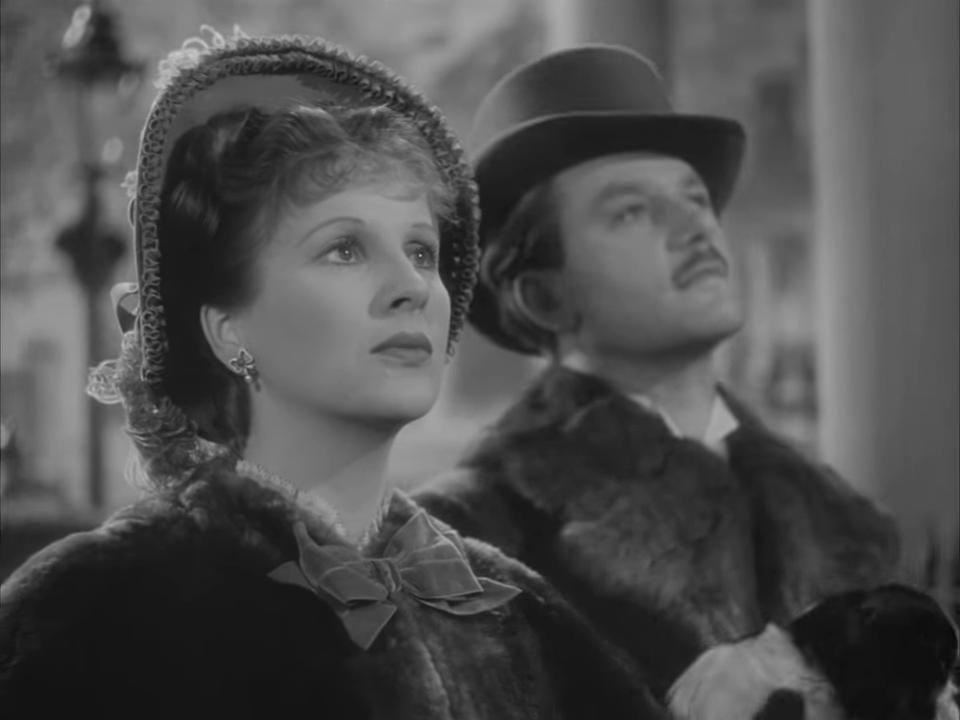
Gaslight (1940)
The film was first adapted for cinema by leading British director Thorold Dickinson. Four years later, MGM’s big-budget remake followed. Strangely, the studio attempted to gaslight audiences by trying to pretend that the British film never existed. MGM tried to destroy all prints, and the original Gaslight only survived because Dickinson had the foresight to make a personal copy.
In both films, a wife is trapped alone in a Gothic house in Victorian London, kept far from friends or family. A murder took place in the house years ago, with a woman being killed for her jewels. But her attacker failed to find the gems and went away empty-handed. Now the house is haunted by the memory of that crime.Every evening the gas lights dim, but is it really her sanity slowly slipping away? Her seemingly attentive husband claims she is showing signs of mental illness. However, it becomes increasingly apparent that he is the one driving her to a breakdown.
1940’s Gaslight (released in the United States as Angel Street) is a psychological thriller which stars Anton Walbrook and Diana Wynyard. This version adheres much more closely to the play it was based on than the 1944 remake.
Set in London, Alice Barlow (Marie Wright) is murdered by an unknown man, who then ransacks her house, looking for her valuable rubies. The house remains empty for many years, until newlyweds Paul and Bella Mallen move in. Bella (Diana Wynyard) soon finds herself misplacing small objects. Before long, her husband Paul (Anton Walbrook) has her believing she is losing her mind. The title is a reference to the gas lamps that Paul lights to help him search the closed-off upper floors. When he does this, it causes the rest of the lamps in the house to dim slightly. When Bella notices and brings this up with Paul, he convinces her she is just imagining things.
The gas lights become representative of the larger pattern of deception which Bella is subjected to.
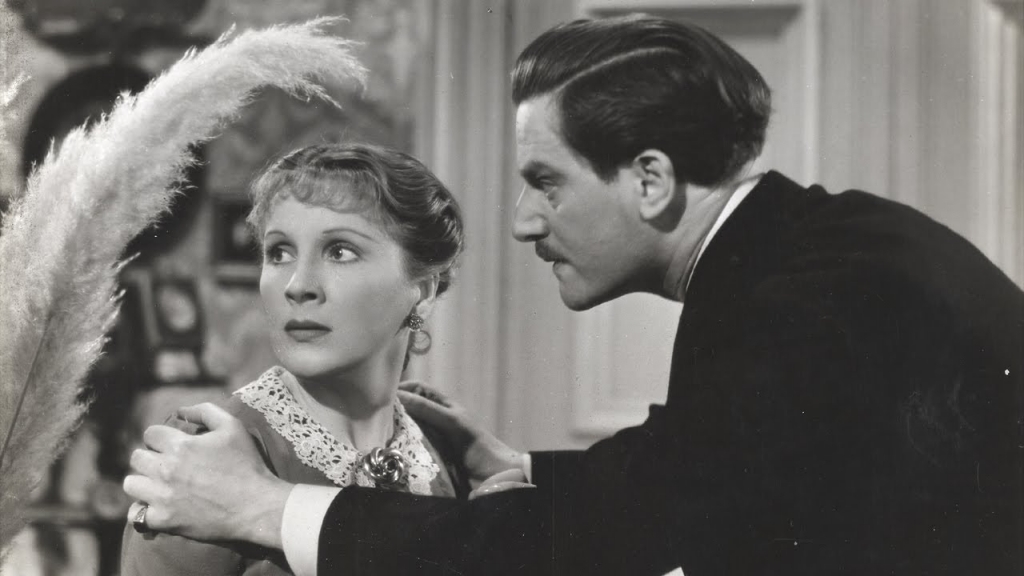
Anton Walbrook and Diana Wynyard in Gaslight (1940)
The man she has married is actually a bigamist, an adulterer, a murderer with an assumed identity, and a master manipulator who would have successfully had Bella committed were it not for the intervention of a former detective (Frank Pettingelli).
The 1944 version was directed by George Cukor and starred Ingrid Bergman, Charles Boyer, Joseph Cotten, and 18-year-old Angela Lansbury in an Oscar-nominated screen debut (Supporting Actress). It had a larger scale and budget than the earlier film, and it features numerous deviations from the original stage play. Yet, the central drama remains that of a husband trying to drive his wife insane in order to distract her from his criminal activities. The film garnered seven Academy Award nominations, including Best Picture, Best Actor, and Best Screenplay. It won for the coveted statue in the category of Best Actress (Bergman) and Best Production Design.
Leaner and nastier than in its American counterpart, 1940’s Gaslight wastes no time creating a very dark and unsettling tone. It opens by showing us the brutal murder of an old woman, Alice Barlow.
In contrast, the 1944 remake opens on our star, a young Paula Alquist (Ingrid Bergman) as she is being taken away from her home at No.9 Thornton Square in London. Her aunt, a world-famous opera singer named Alice Alquist, has just been murdered. The perpetrator left without the valuable jewels he was willing to kill for, having been interrupted by fourteen-year-old Paula. After Alice’s murder, Paula is sent to Italy to train to become an opera singer herself.
Years later, an adult Paula meets and marries Gregory Anton (Charles Boyers) after a two-week-long whirlwind romance, happy to give up her singing career to become Mrs. Anton. In his first act of psychological manipulation, Gregory persuades Paula to move back to London, into the long-vacant home of her deceased aunt — the source of her deep-seated trauma and fear of love and happiness. To help calm her anxiety of Alice’s violent murder, Paul insists they move all of Alice’s belongings into the attic.
The 1944 version takes more time getting to the worst of the malicious mind games, allowing for greater character development and establishing the happy couple before things take a darker turn.
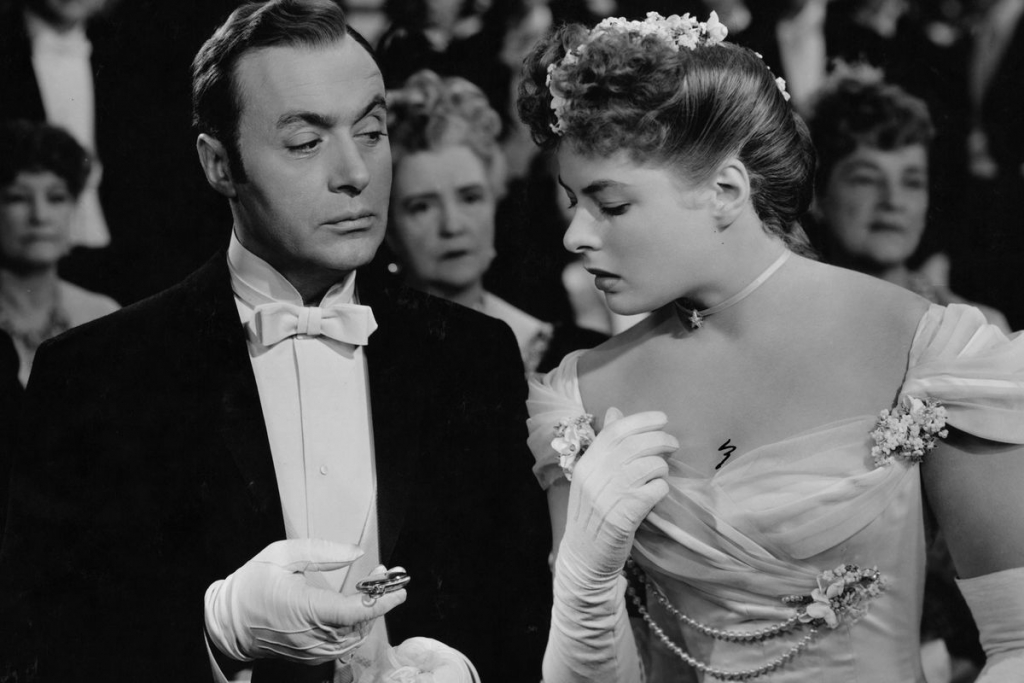
Gaslight (1944)
Taking time to establish Paula as a damaged woman terrified that any moment of happiness will eventually lead to heartbreak makes the subsequent abuse at the hands of Gregory that much more sinister and upsetting. It also sets up her vulnerability early on, making it easier for Gregory to bend her will to his own.
With more backstory and a longer opening, we are shown the possible trajectory of Paula’s life had it not been for her ill-fated union with Gregory. She was on track to becoming a renowned singer like her aunt, a great beauty who Paula strongly resembles. We see her falling under Gregory’s spell, and Boyer’s dashing good looks and charm make it easy to see why Paula is so quick to give up everything to be with him. Unlike the 1940 version, we are privy to the couple’s courtship, and we become invested in the relationship. As a result, when it becomes clear that Paula is being used and manipulated, the sting of betrayal hits harder.
The fact that Paula’s aunt looks so much like her and the two share a common passion for the theater helps drive home the horrible realization that Gregory is responsible for destroying two lives and crushing the hopes and dreams of two beautiful, talented women. He murdered Aunt Alice, before killing the spirit of her niece Paula and likely ensuring she will never again be completely whole.
Both versions feature exceptional lead performances.
While both Diana Wynward and Ingrid Bergman are compelling in their respective turns as the beleaguered wife, Bergman more than earns her first Best Actress win (having been previously nominated four times before).
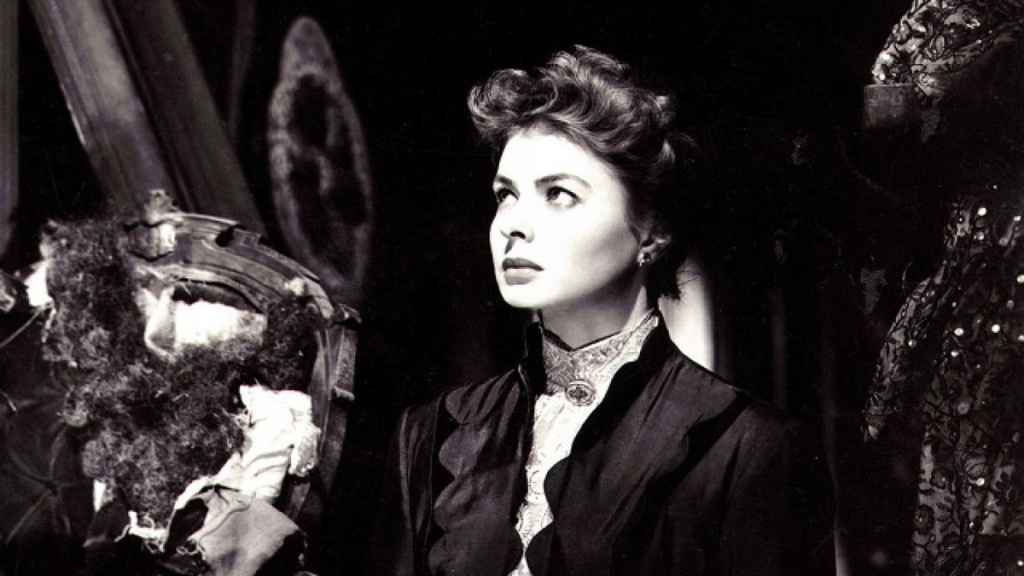
Ingrid Bergman in Gaslight (1944)
In Cukor’s film, the part of the abused wife is strengthened, less overshadowed by her villainous husband. Often heralded as a “women’s director” (a label he rejected), Cukor was known for giving women fuller roles. As a result, Bergman’s character is more than just a scared wife and victim. In fact, the film provided the celebrated actress with a memorable showcase, and Bergman plays her with a range that encompasses every emotion on the spectrum. She runs the gamut from being passionately in love and almost naively trusting, to being disoriented, unsure of herself, hysterically terrified, and even vengeful.
She plays her final scene with the gravitas of a Shakespearean tragedy, though she never overdoes her pain and growing confusion — keeping the character grounded and sympathetic throughout her horrible ordeal.
As glamorous and commanding of a presence as Bergman is, she convincingly plays a fragile and frightened victim. We believe — and feel — every moment of her harrowing downward spiral. After seeing Bergman’s spellbinding performance, Alfred Hitchcock — who had made two analogous gothic thrillers, Rebecca (1940) and Suspicion (1941)— cast Bergman in two upcoming pictures, Spellbound (1945) and Notorious (1946).
As the villains, Walbrook and Boyer are very different.
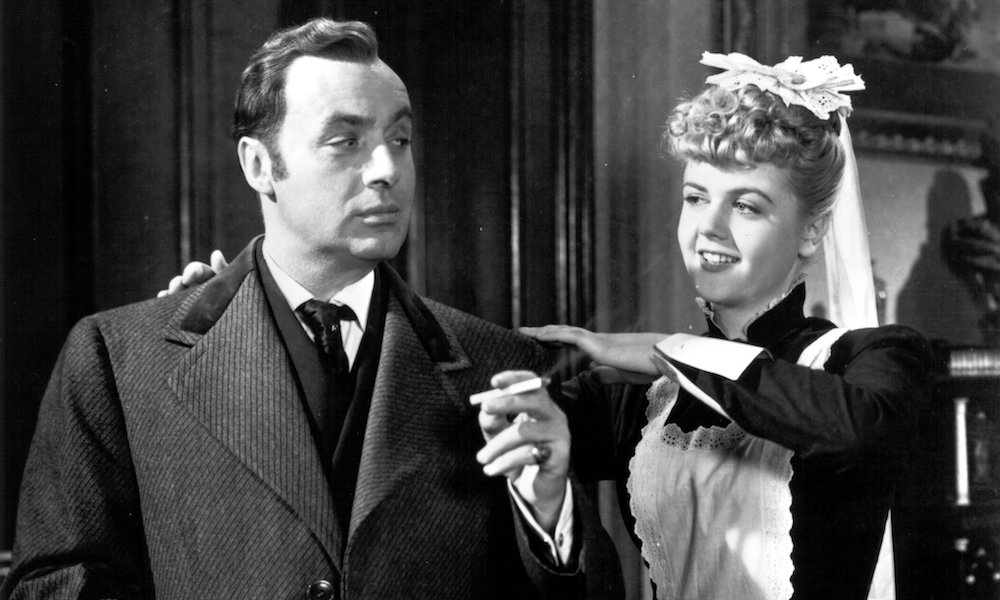
Boyer and Lansbury in Gaslight (1944)
Walbrook is a much more sinister villain, showing very little hints of a man worth falling in love with. He lords over his woeful wife, manipulating her it seems as much out of spite as necessity. He’s much more unhinged than Boyer, openly preying on his tawdry housemaid while hiding a second wife in Australia.
On the other hand, Boyer gives a less menacing, but still eerily effective performance. In this version, he’s not harboring a secret wife, and he doesn’t have an affair with the maid (Lansbury). But he doesn’t really hide his sexual attraction for her either. He also uses her as a weapon in his systematic humiliation of his wife.
Boyer’s Gregory is painted less as a sociopath and more as a very determined criminal mastermind who will stop at nothing to secure his treasure. Paula is simply a casualty, just someone who gets in the way of his pursuit. He manipulates her as a means to an end, even hinting he may actually have legitimate feelings for his wife. Nevertheless, the scenes in which he coolly targets her vulnerability and watches her fall apart, without a shred of guilt or regret, are chilling.
Both films are beautifully shoot, imbued with unbearable tension. However, Dickinson’s film is more claustrophobic, confined entirely to the Victorian home, and it boasts a more pervasive darkness and a more overwhelmingly oppressive atmosphere.
The house in Cukor’s film, like its predecessor, is an important character. And, in this version, it’s resplendent — simply breathtaking to behold. Cedric Gibbons and his team won an Oscar for set design, and it’s not hard to see why. In fact, the entirety of Cukor’s film is draped in a glamour the original can’t match. While Bergman is more than credible as a woman on the verge of a complete breakdown, her enormous allure and star quality never wanes.
Of the two films, the Hollywood production is certainly far more famous, thanks in large part to its star-studded cast. But the British version does a great deal right and is often hailed as the more frightening and potent of the two films. Both are powerful dramas which spotlight an insidious kind of abuse that doesn’t leave any marks or evidence.



















2 Comments
2 Records
JT wrote:
Susan wrote: